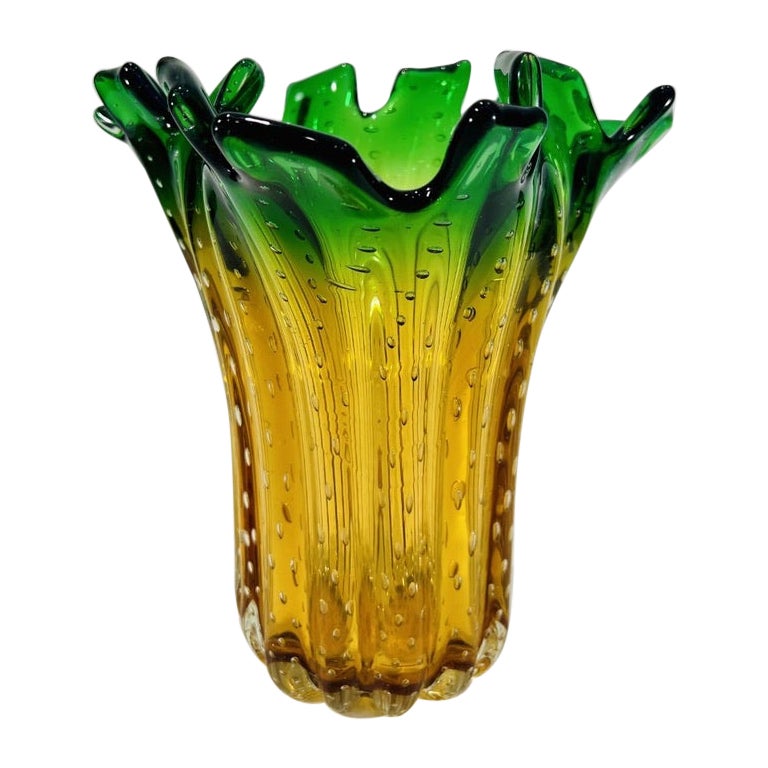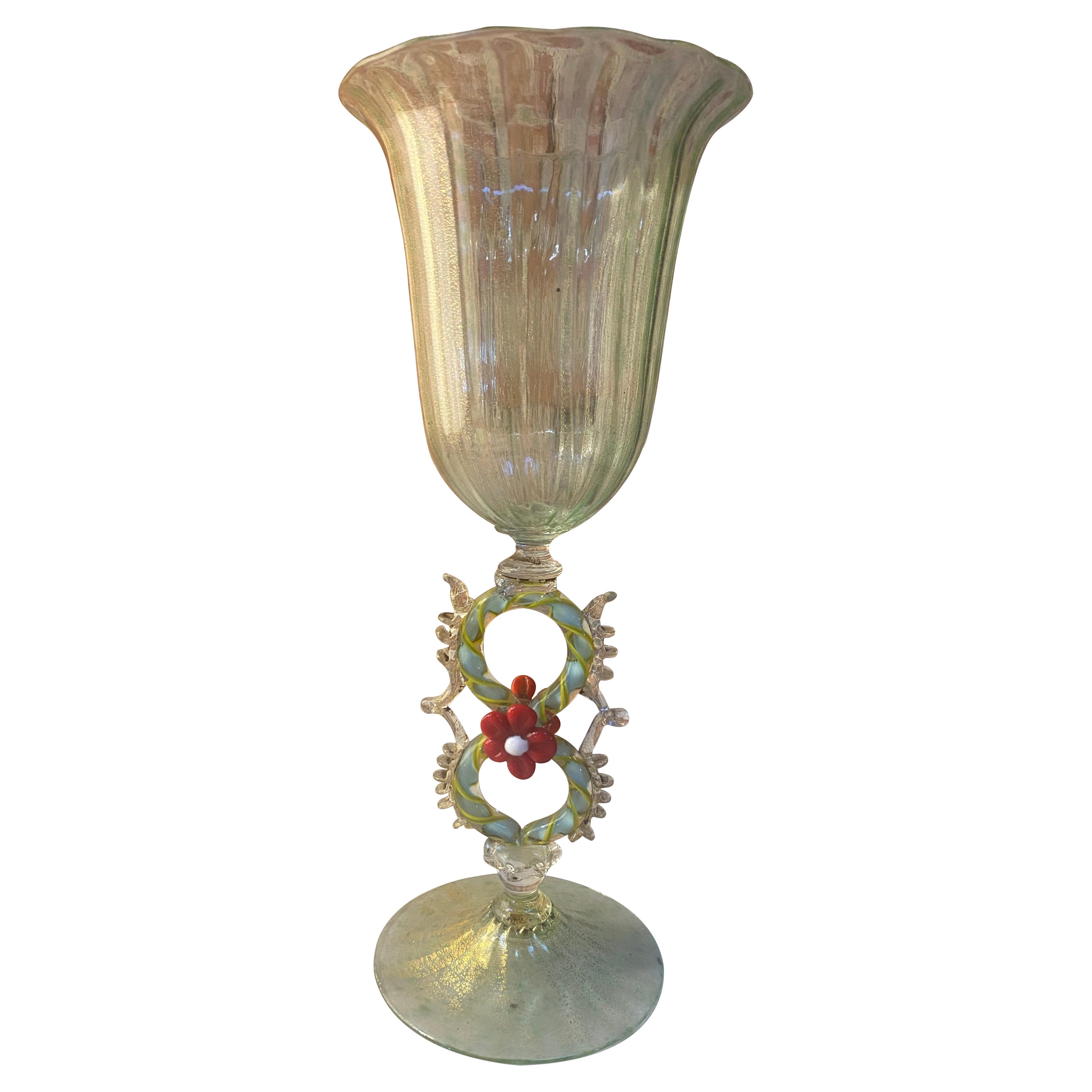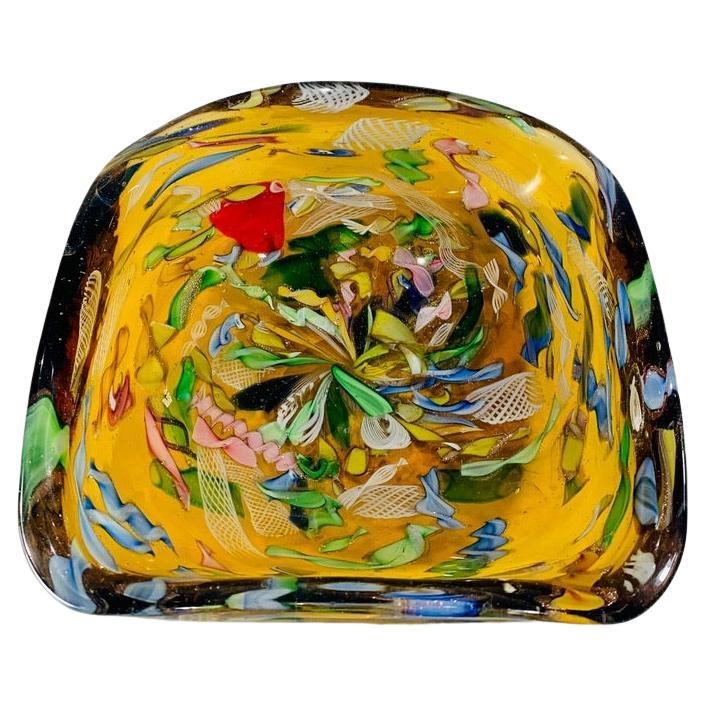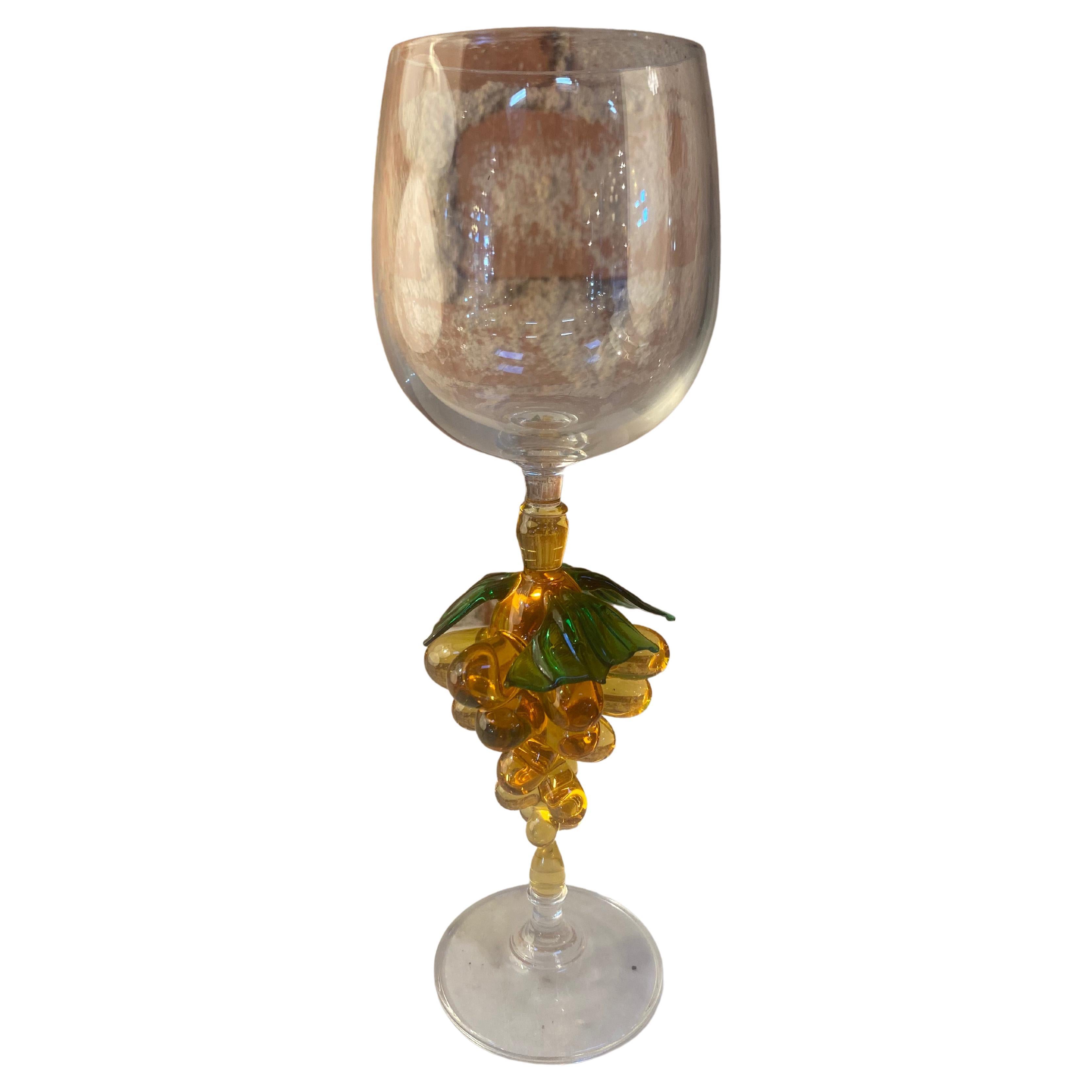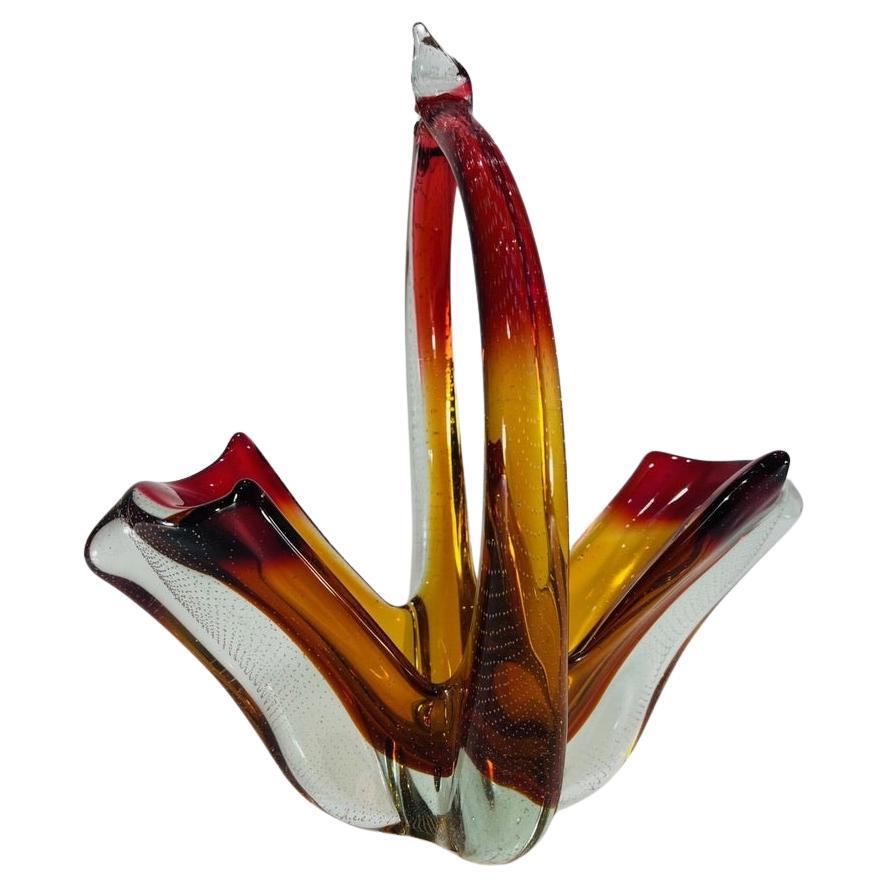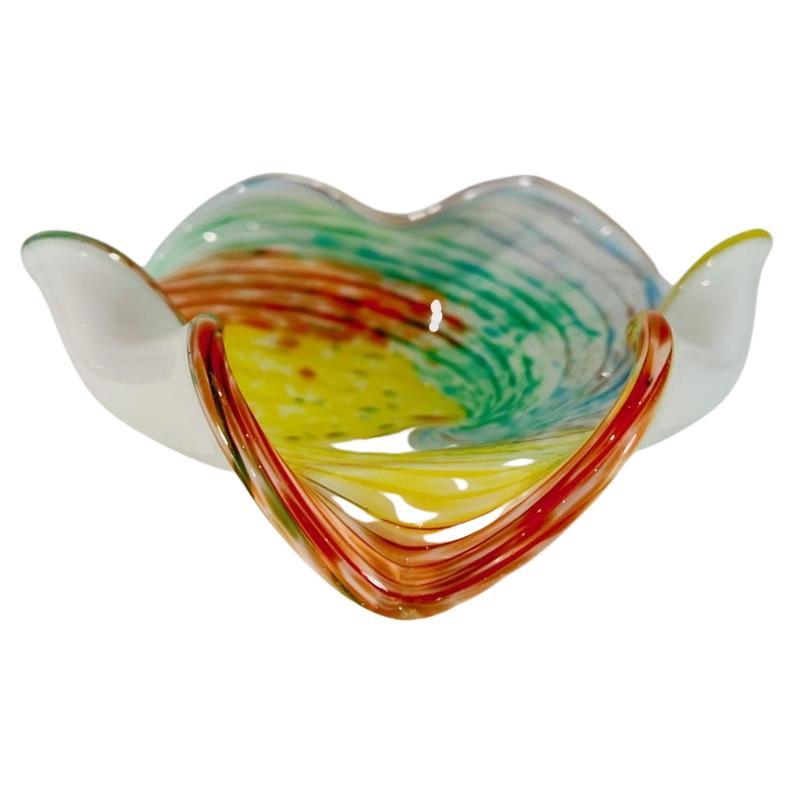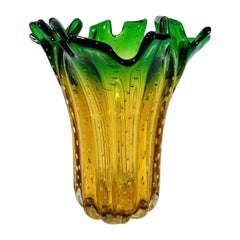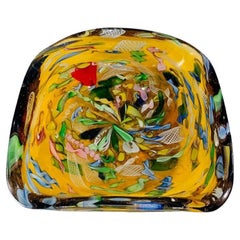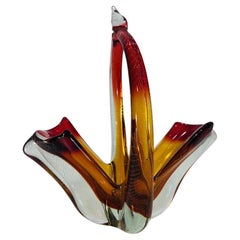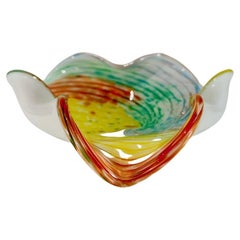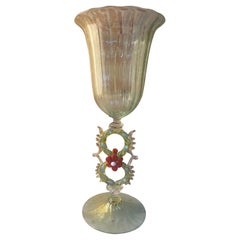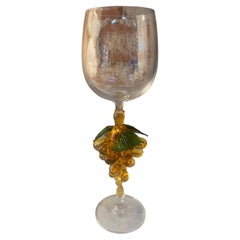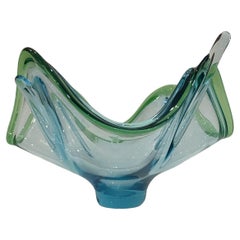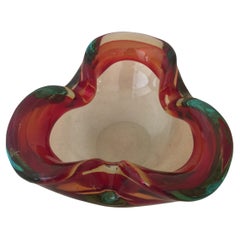Items Similar to Large Fratelli Toso attributed Murano Glass multicolor circa 1950
Want more images or videos?
Request additional images or videos from the seller
1 of 8
Large Fratelli Toso attributed Murano Glass multicolor circa 1950
$840
£637.09
€731.72
CA$1,203.42
A$1,324.87
CHF 677.15
MX$15,812.71
NOK 8,621.50
SEK 8,067.81
DKK 5,465.52
About the Item
Incredible center piece in Murano glass applied attributed to Fratelli Toso circa 1950 with bubbles inside glass.
- Attributed to:Fratelli Toso (Cabinetmaker)
- Materials and Techniques:Murano Glass,Other
- Period:
- Date of Manufacture:1950
- Condition:Perfect Conditions.
- Seller Location:Rio De Janeiro, BR
- Reference Number:1stDibs: LU8821235565022
About the Seller
5.0
Vetted Professional Seller
Every seller passes strict standards for authenticity and reliability
Established in 1981
1stDibs seller since 2023
9 sales on 1stDibs
Typical response time: 6 hours
- ShippingRetrieving quote...Shipping from: Rio De Janeiro, Brazil
- Return Policy
Authenticity Guarantee
In the unlikely event there’s an issue with an item’s authenticity, contact us within 1 year for a full refund. DetailsMoney-Back Guarantee
If your item is not as described, is damaged in transit, or does not arrive, contact us within 7 days for a full refund. Details24-Hour Cancellation
You have a 24-hour grace period in which to reconsider your purchase, with no questions asked.Vetted Professional Sellers
Our world-class sellers must adhere to strict standards for service and quality, maintaining the integrity of our listings.Price-Match Guarantee
If you find that a seller listed the same item for a lower price elsewhere, we’ll match it.Trusted Global Delivery
Our best-in-class carrier network provides specialized shipping options worldwide, including custom delivery.More From This Seller
View AllVase in Murano Glass bicolor attributed to Fratelli Toso circa 1950
By Fratelli Toso
Located in Rio De Janeiro, RJ
Incredible and big vase bicolor in Murano glass attributed to Fratelli Toso circa 1950
Category
Vintage 1950s Italian International Style Glass
Materials
Murano Glass
AVeM Murano glass multicolor center piece circa 1950 "Bizantino"
By Arte Vetraria Muranese (AVEM)
Located in Rio De Janeiro, RJ
Incredible AVeM Murano glass center piece "bizantino" multicolor circa 1950.
Category
Vintage 1950s Italian Mid-Century Modern Centerpieces
Materials
Murano Glass
Itamo Pustetto Murano glass bicolor circa 1950 basket.
Located in Rio De Janeiro, RJ
Incredible Itamo Pustetto Murano glass bicolor 1950 basket.
Category
Vintage 1950s Italian International Style Vases
Materials
Murano Glass
Aureliano Toso Murano glass multicolor circa 1950 bowl.
By Aureliano Toso
Located in Rio De Janeiro, RJ
Incredible Aureliano Toso Murano glass circa 1950 multicolor bowl.
Category
Vintage 1950s Italian International Style Decorative Bowls
Materials
Murano Glass
Dino Martens Italian Multicolor 1950 Murano Glass "Fazzoletto"
By Dino Martens
Located in Rio De Janeiro, RJ
Incredible multicolor vase with applied glass attributed to Dino Martens 1950 fazzoleto model.
Category
Vintage 1950s Italian International Style Glass
Materials
Murano Glass
Fratelli Toso Murano glass multicolor circa 1970 vase
By Fratelli Toso
Located in Rio De Janeiro, RJ
Incredible Fratelli Toso Murano glass multicolor circa 1970 vase.
Category
Vintage 1970s Italian International Style Vases
Materials
Murano Glass
You May Also Like
Italian Handcrafted Murano Glass 1970s
Located in Los Angeles, CA
Italian handcrafted chalice in blown Murano glass clear color, 1970s.
Category
Vintage 1970s Italian Mid-Century Modern Glass
Materials
Murano Glass
Italian Handcrafted Murano Glass 1970s
Located in Los Angeles, CA
Italian handcrafted chalice in blown Murano glass clear color and green, 1970s
This elegant chalice is rich in lovely details that add harmoniously to its grace.
Category
Vintage 1970s European Mid-Century Modern Glass
Materials
Murano Glass
Murano Glass Centerpiece Italian 1940
Located in Ciudad Autónoma Buenos Aires, AR
Murano Glass Centerpiece Italian 1940
Category
Mid-20th Century Italian Art Deco Decorative Bowls
Materials
Art Glass
$1,160 Sale Price
20% Off
Murano, Italian, Attributed to Barovier Toso, 1940
By Vetreria Artistica Barovier & C.
Located in Ciudad Autónoma Buenos Aires, C
Murano with gold
We have specialized in the sale of Art Deco and Art Nouveau and Vintage styles since 1982. If you have any questions we are at your disposal.
Pushing the button that reads 'View All From Seller'. And you can see more objects to the style for sale.
Attributed to Barovier Toso
We have specialized in the sale of Art Deco and Art Nouveau and Vintage styles since 1982.
The company is one of the oldest family businesses in the world, founded in 1295 as Barovier. "The name Barovier derives from the term berroviere (highwayman/policman , which indicates the armigero (person entitled to bear arms guarding the captain of the people. It is probable that some Barovier, originally from Treviso, settled in Murano around 1291, when a law of the Republic imposed the concentration on the island of all glass furnaces." Jacobello was the first member of the Barovier family to work glass at this time. It is thought that the company originated in Treviso[citation needed]. The Toso family had been established in Murano since around 1350. In the 1400s Angelo Barovier created glass objects which are currently preserved in various museums.[6] Angelo is recognized as significant for uniting the knowledge which had been developed and handed down by family Barovier. He was not only considered and artist but a scientist.
The company became Ferro Toso Vetrerie Artistiche Riunite S.A in 1936 when Vetreria Artistica Barovier merged with Ferro Toso, specializing in crystalline glass, mother-of-pearl glass, and gold-free cornelian red glass. In 1942, the company was renamed Barovier & Toso.
In 1919–1920, 30 year old designer Ercole Barovier began a 50-year career as the artistic director of Barovier & Toso. "After studying medicine and working as a radio operator during World War One he joined the family firm in 1920 when he and his brother Nicolo took over the management from their father Benvenuto. From 1927 Ercole was the main designer and from 1934, when Nicolo left the company, (he was) also the sole owner." While Barovier did not have formal training as a glassblower, his artistic designs produced objets d'art that have become the most critically acclaimed in the history of Ercole - Barovier.[9] In 1930 he produced his award-winning “Primavera” series. "The Primavera series ... is distinguished by a milky white 'craquelé' glass with the addition of black or blue pasta vitrea trim ("opaque colored glass whose consistency is made to appear like ceramic") and decoration. There was a very limited production of this series due to the fact that it was a result of a glass mixture obtained accidentally so it could never be replicated."[13] One example of this series, a Primavera Pigeon, was sold at auction for GBP 275,000 (approximately $360,000 USD, not inclusive of the buyer’s premium) on October 16, 2019.
Barovier continued to produce innovative designs of which the “Lenti” vase...
Category
Vintage 1940s Italian Art Deco Centerpieces
Materials
Murano Glass
Murano , 1920, Italian.
Located in Ciudad Autónoma Buenos Aires, C
Murano
We have specialized in the sale of Art Deco and Art Nouveau and Vintage styles since 1982. If you have any questions we are at your disposal.
Pushing the button that reads 'Vi...
Category
Vintage 1920s Italian Art Deco Tobacco Accessories
Materials
Murano Glass
$2,350
Barovier and Toso Centerpiece/ Empty Pockets Iridescent Murano Glass 1940 Italy
By Barovier&Toso
Located in Milano, IT
Exceptional Murano Glass Centerpiece / Svuotatasche Di Barovier e Toso .
Slightly rainbow glass .
Category
Vintage 1940s Italian Other Centerpieces
Materials
Murano Glass
More Ways To Browse
German Nef
Lemons Centerpiece
Metal Epergne
Pewter Centerpiece Bowl
Pink Epergne
Silver Cake Plateau
Silver Plated Table Centrepiece
Silver Table Trivet
Stevens And Williams Green Crystal Glasses
Three Piece Plateau
Wedgwood Nautilus
Wmf Fruit Bowl
Cut Glass Oval Bowl
Limoges Footed Bowl
Lladro Fish
Rococo Plateau
Silver Flower Frog
Wedding Cake Stand
